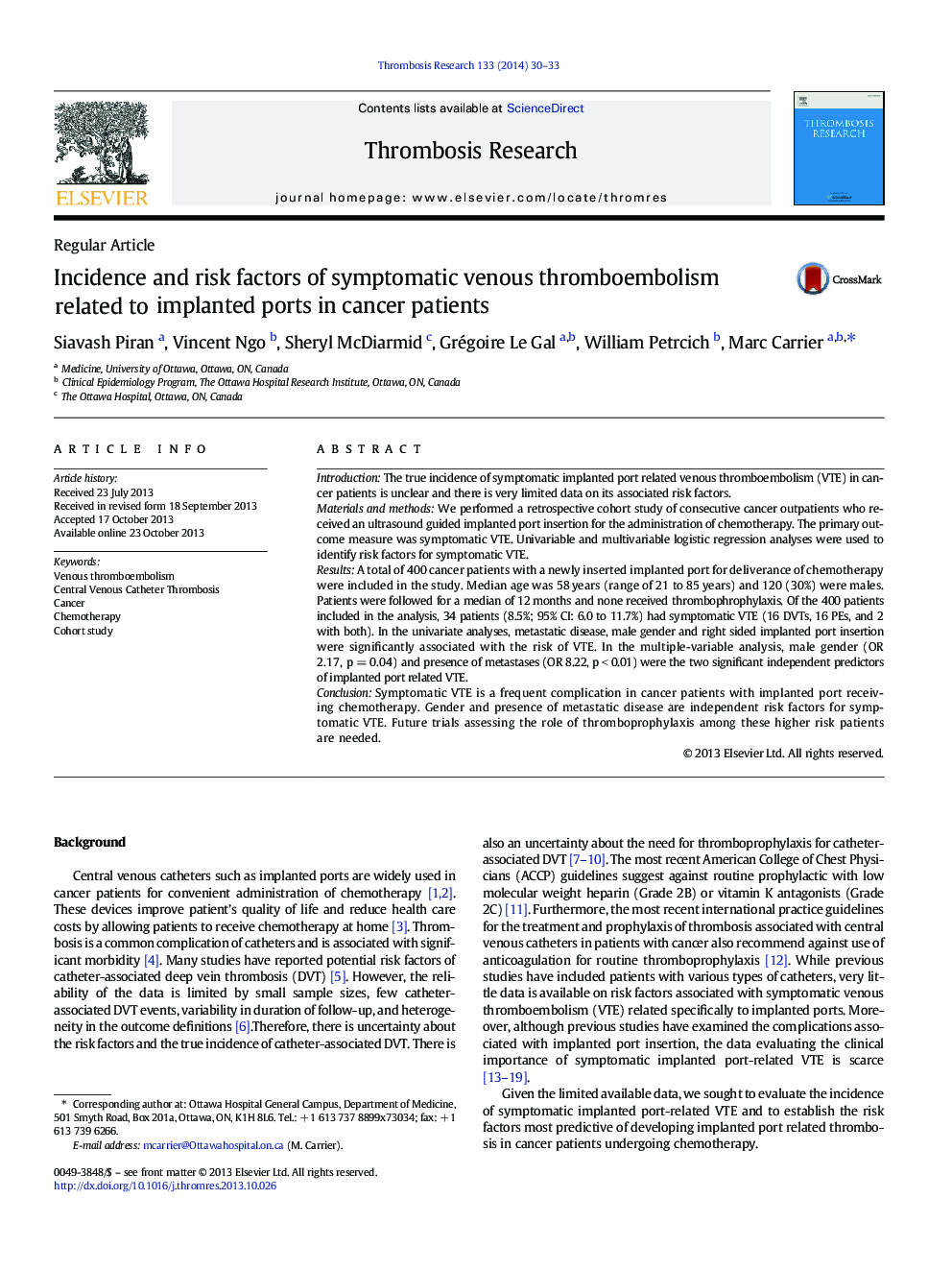| Article ID | Journal | Published Year | Pages | File Type |
|---|---|---|---|---|
| 6001651 | Thrombosis Research | 2014 | 4 Pages |
IntroductionThe true incidence of symptomatic implanted port related venous thromboembolism (VTE) in cancer patients is unclear and there is very limited data on its associated risk factors.Materials and methodsWe performed a retrospective cohort study of consecutive cancer outpatients who received an ultrasound guided implanted port insertion for the administration of chemotherapy. The primary outcome measure was symptomatic VTE. Univariable and multivariable logistic regression analyses were used to identify risk factors for symptomatic VTE.ResultsA total of 400 cancer patients with a newly inserted implanted port for deliverance of chemotherapy were included in the study. Median age was 58 years (range of 21 to 85 years) and 120 (30%) were males. Patients were followed for a median of 12 months and none received thrombophrophylaxis. Of the 400 patients included in the analysis, 34 patients (8.5%; 95% CI: 6.0 to 11.7%) had symptomatic VTE (16 DVTs, 16 PEs, and 2 with both). In the univariate analyses, metastatic disease, male gender and right sided implanted port insertion were significantly associated with the risk of VTE. In the multiple-variable analysis, male gender (OR 2.17, p = 0.04) and presence of metastases (OR 8.22, p < 0.01) were the two significant independent predictors of implanted port related VTE.ConclusionSymptomatic VTE is a frequent complication in cancer patients with implanted port receiving chemotherapy. Gender and presence of metastatic disease are independent risk factors for symptomatic VTE. Future trials assessing the role of thromboprophylaxis among these higher risk patients are needed.
